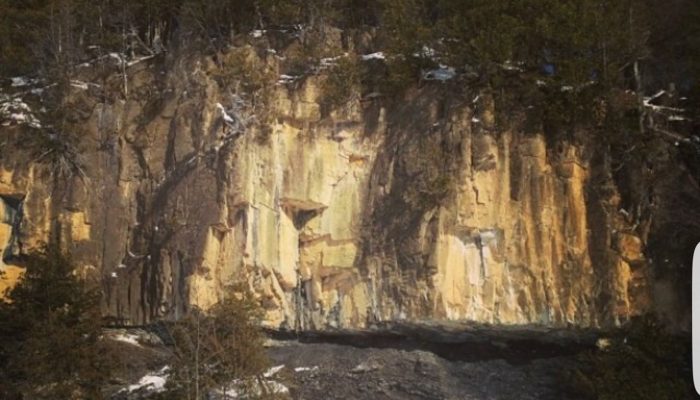
By Erin Mundy – a plain language summary of part of her Masters thesis
Groundwater is the water that collects underground in pores and cracks in the rock. Understanding, protecting and sustaining groundwater flow is critical because over two billion people drink groundwater every day. The flow of groundwater can be impacted by geologic structures, such as fractures and faults. A fracture is a break in the rock; a fault is a break in the rock where the rocks move relative to each other (ie. one rock will move up, one rock will move down, as seen in Figure 1).
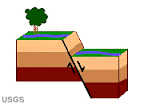
Figure 1. Diagram of a thrust fault
Faults can act as barriers slowing down groundwater flow, they can be a conduit speeding up groundwater flow, or amazingly they can act both slow it down and speed it up!
How groundwater moves through these rock structures is difficult to directly observe because it all happens underground and rarely exposed on the surface. The Champlain thrust fault at Lone Rock Point in Burlington, Vermont, provides a unique opportunity to study groundwater flow around a fault because approximately 1 km of the fault is exposed along the edge of Lake Champlain (Figure 2). Here, an older rock
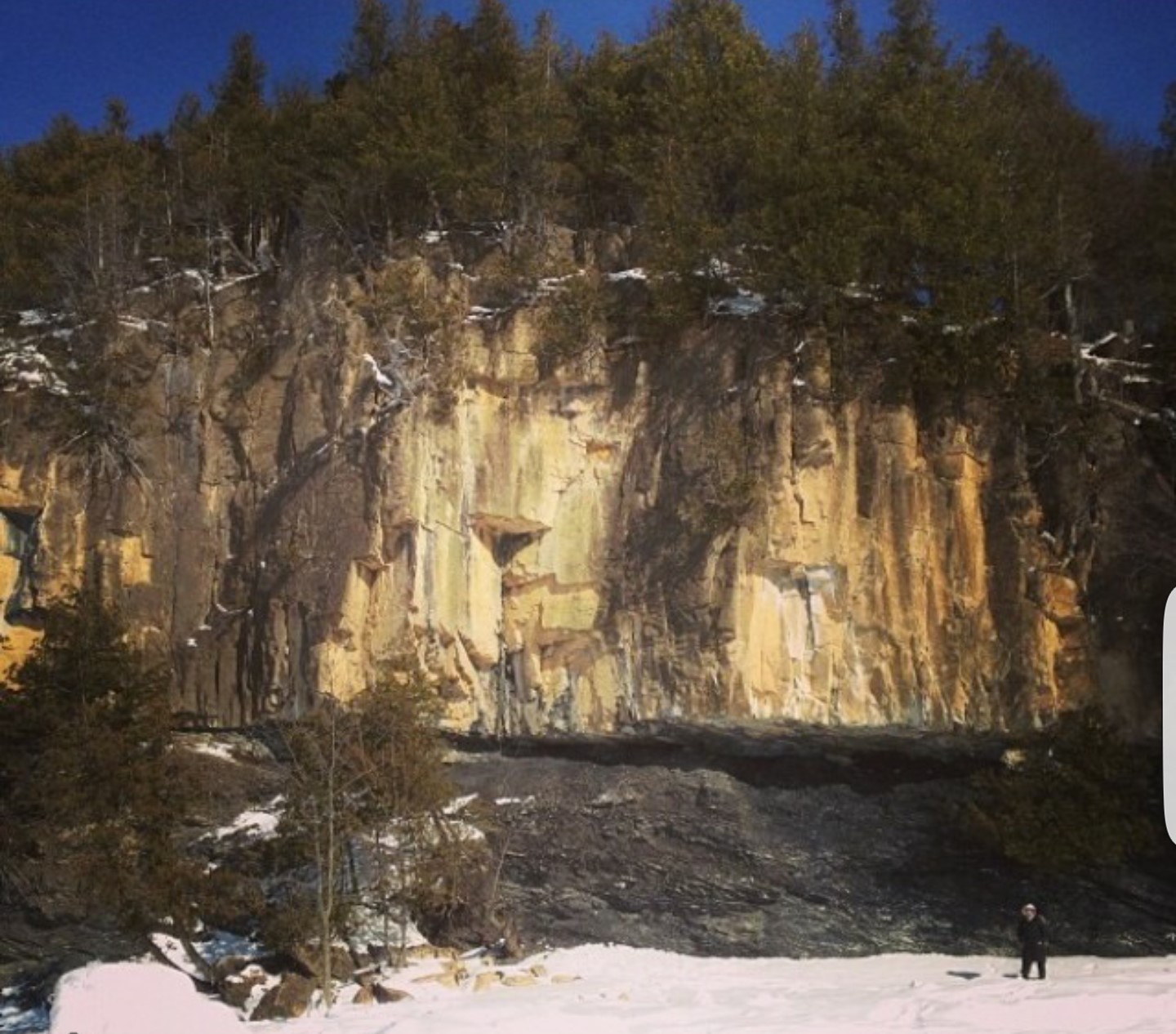
Figure 2: Photograph of the Champlain Thrust fault at Lone Rock Point, Burlington, Vermont. Note the person at the bottom right for scale
(yellow) is thrust over a younger rock (black). No one has studied groundwater flow around this fault in detail, so we hoped to find out a basic understanding of the relationship between the fault and groundwater flow at this location.
To understand groundwater flow around this fault, we did three things: 1) we walked along the fault and made note of changes in the fault (ie. the width of the fault, the angle of the fault, the shape of the fault, etc.); (2) we looked for areas where groundwater was leaking from the rock surface (this is known as groundwater seepage – we wanted to see if there was a relationship between where groundwater was leaking out and the changes in the angle/width of the fault); and (3) we drilled three wells and then pumped water out of these wells. We pumped water out of one well and measured the water level in the other wells – this gives you an idea of how the groundwater moves. For example, if you pump water out of one well and the water level in a nearby well declines drastically, this suggests that the water is easily moving through the rock. So if you’re pumping water from the fault and that happens, then the fault is most likely channeling water along the fault. If the opposite happens, then the fault may be acting as a barrier to groundwater flow.
We found four main geologic structures at the Champlain thrust fault: (1) the main fault, (2) an area where the fault splayed into many smaller faults, (3) areas where the fault thickness increased to 3 m, and (4) areas where there are traces of older, cemented fault rock (Fig. 3).
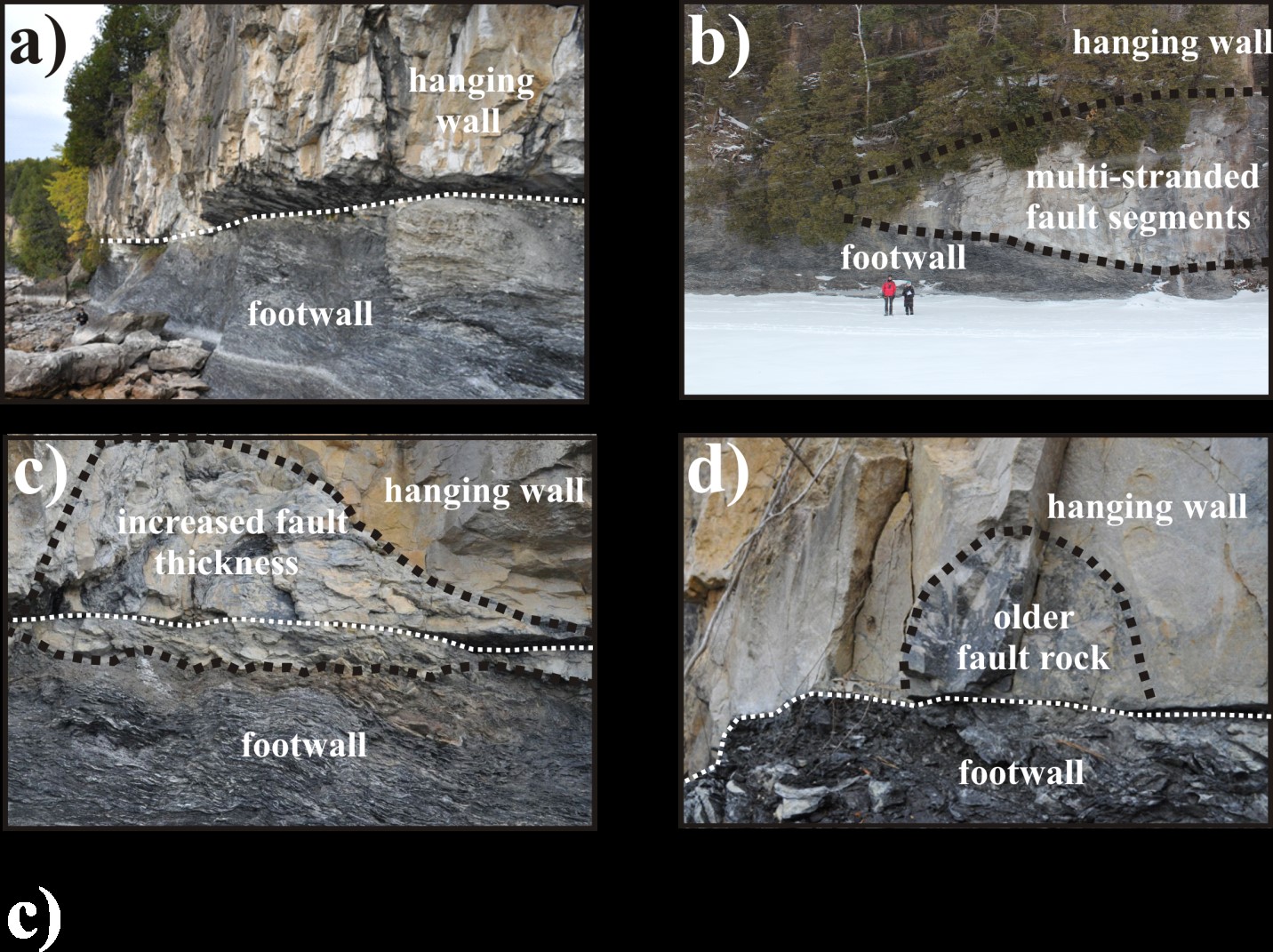
Figure 3. Most important structures we observed at the Champlain thrust fault. the thin dashed white line follows the main fault, thicker black dashed line follows the main structural features. Hanging wall is the older rock; footwall is the younger rock. a) main fault; b) fault splay; c) increased fault thickness; and d) older abandoned fault rock
We found 19 areas along the rock where groundwater was leaking out of the cliff (Note: This was done in the winter so the groundwater was frozen into ice). We found that most of the groundwater seepage occurred in the younger (black) rock, with a few at the fault and where the fault splays out into smaller faults (Figure 4).
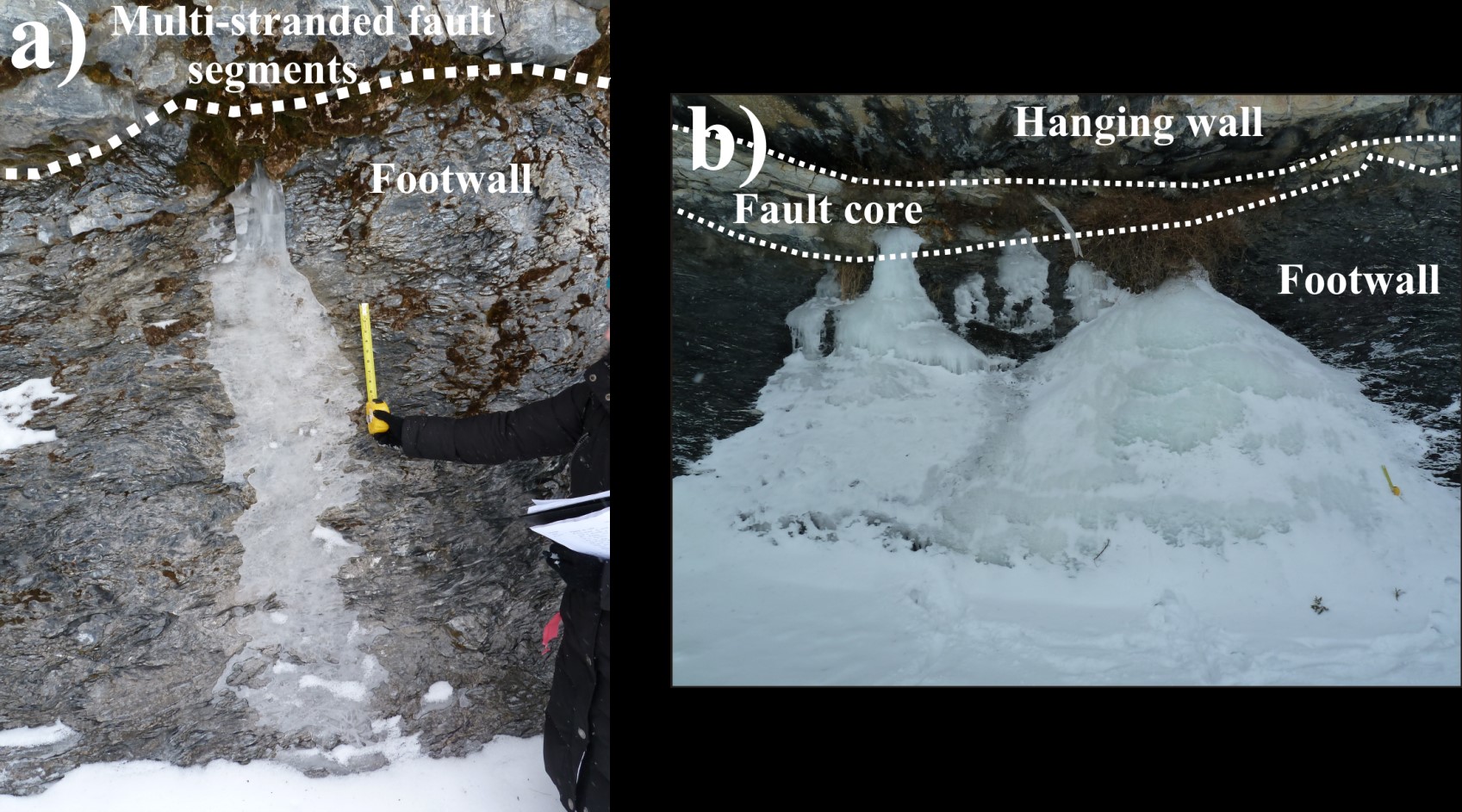
Figure 4. Seeps located a) at the intersection of a multi-stranded fault structure and b) at the fault core. Note measuring tape for scale (1 foot)
While drilling the two wells at the site, we had two unexpected problems. One, there was a large difference between the depth of the fault in the two wells. The fault depth in one well was 27.4m, while in the other well (which was 10 m away), the fault depth was 70 m. This suggests that there must be another fault in between these two wells that offsets the fault depth. The other unexpected complication was that we drilled into 1.8 m and 2.1 m caves beneath the ground. Caves are common features in limestone, but the rock at our site is a dolostone, which is usually more resistant, so caves are an interesting find! The pumping test revealed a complex system. Further testing is needed to better refine these results.
Combining the data from the surface and subsurface observations, we created a preliminary three-dimensional model of the Champlain thrust fault (Figure 5). Where the rock is exposed at the edge of Lake Champlain, the fault thickness varies, splaying out into smaller faults and showing traces of older fault rock. Groundwater is leaking out of the younger rock (footwall) and along the fault. At the well-site, the fault is offset by another fault and caves are present. The three approaches we used (geology, seepage, pumping tests) all revealed different aspects of the Champlain Thrust fault, and exposed the complexity of groundwater flow around faults.
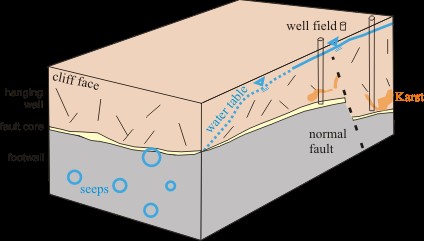
Figure 5. Three-dimensional conceptual model of the Champlain thrust fault.

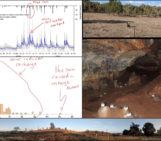
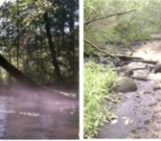
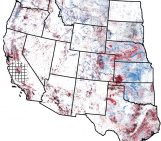

Alex W Beaty
Very interesting! Thank you!!